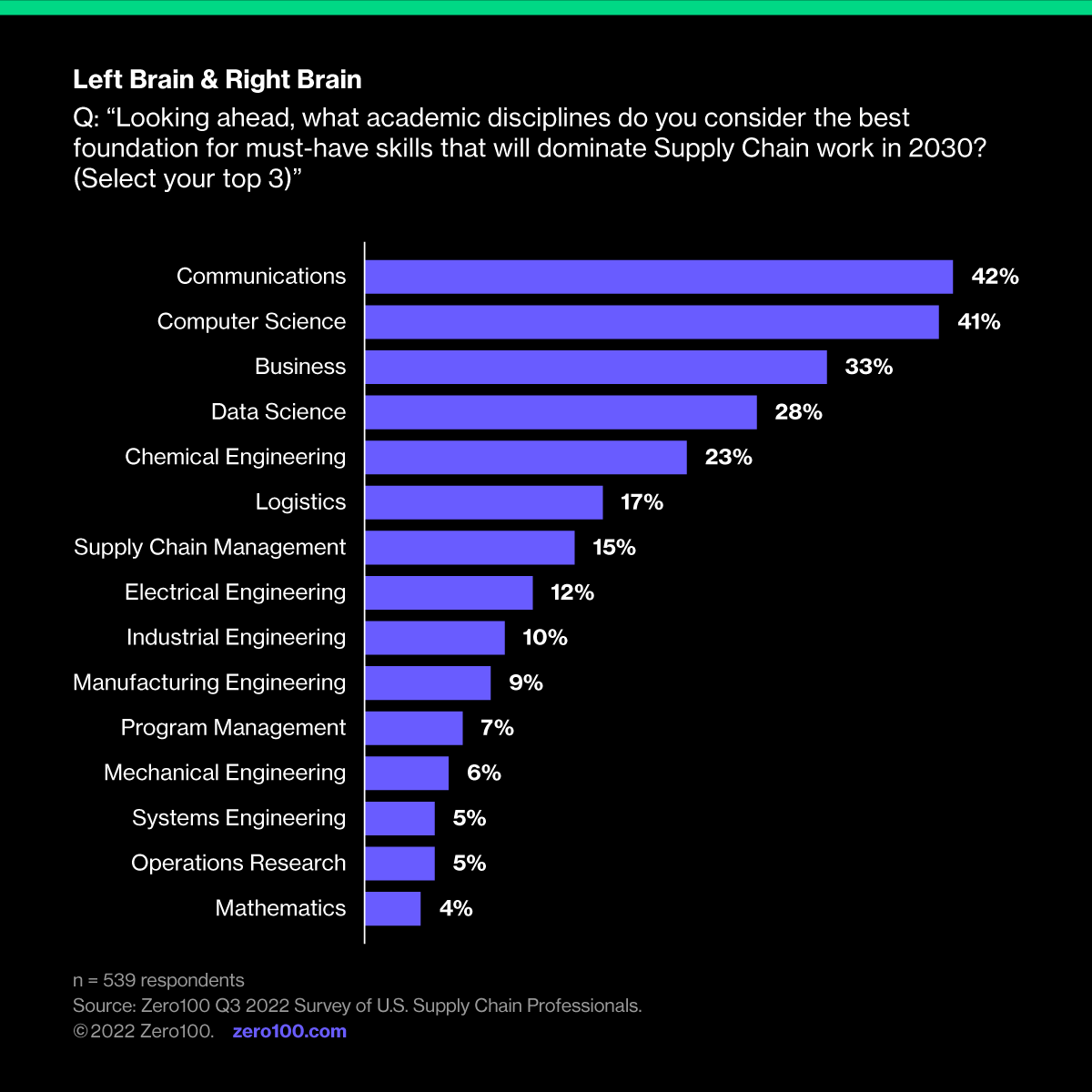At a recent meeting of the Zero100 Advisory Board, one concept crystallized out of a three-hour conversation spanning politics, science, and finance – it was the urgent need for more systems thinking in supply chain management. Talent 2030 is a unifying research topic across industries within our community and contrary to popular belief, the most urgent need is not data science skills, but a better way to solve problems and make decisions in a time of reinvention rather than continuous improvement.
What Is Systems Thinking?
A new report from the World Economic Forum defines it roughly as holistic problem solving with “an in-depth understanding of the patterns, relationships, interdependencies, and trade-offs” between the dynamics behind challenges like climate change or energy security. In supply chain terms, it is analogous to breaking down silos to tackle operational problems, end-to-end. This familiar notion, however, suddenly feels like a crisis of capability rather than just a solid discipline for day-to-day work.
In practical terms, systems thinking means an ability to see the second, third, and even tenth-order effects of actions and then to make a decision accordingly. It also means having at least some understanding of adjacent systems and how they might interact, like, for instance, the psychology of panicky shoppers at the beginning of COVID and the nature of toilet paper packaging on a grocery shelf. Some systems are engineering or material-science based, while others are emotional and driven by human frailty.
This sudden need for systems thinking may be a product of amazing new technologies intersecting with cultural anxiety about the future. Protectionism, for instance, is as much about nationalistic fear as it is about technology or economic policy. Supply chain leaders’ ability to see and grasp both the quantitative and qualitative factors is critical to de-risking a sourcing strategy.
Right Brain, Left Brain, All Brain
In a 2022 Zero100 CSCO survey asking for the top three majors to hire into supply chain for the year 2030, communications just edged out computer science for the top spot overall. The takeaway is not that operations are better run by creative types, but that both right and left-brain thinking is now essential to supply chain management. Data science is up there (4th on this list), but right behind business (3rd).

Systems thinking takes this idea up one level to say that interaction between things like the crushing weight of a cardboard container and the optimal load in a local delivery van needs to be cross-referenced with the potential of a hostile TikToker sharing a disappointing unboxing moment. The same logic, on a much grander scale, captures the puzzles of decarbonization via electric vehicles or whether a reusable cotton tote is greener than a single use plastic bag.
The answers are rarely obvious, and the tenth-order effects are sometimes the unlock to a breakthrough idea.
Three Tactics to Teach Systems Thinking
The WEF report was aimed at education policymakers, but three of its recommendations align perfectly with what we see today as emerging best practice in skill building for 2030:
- Provide media literacy training – One of the easiest ways to help build systems thinking among the traditionally quantitative types who gravitate to supply chain careers is to have your internal comms people teach your team the basics of PR, messaging, and storytelling. This encourages thinking empathetically about what and how different audiences hear. Their emotional journey is a system just like inventory flowing through a cross-dock and it affects your ability to manage change.
- Use technology to personalize learning – AI is perfectly suited to this task, as we have seen with Netflix. Technology also allows for self-paced, remote, and intensively interactive learning systems. It is hard to imagine a better way to learn than via simulations like those long-used in aerospace. The same logic applies to learning how to explain and plan complex systems investments – why not use a digital twin before investing in a real-world pilot.
- Shift from solution-led learning to problem-led learning – This means a move away from teaching tools and toward teaching problem formulation. It is a better way to think about creating solid data foundations than frantically cleaning up data sets. It also helps keep people focused on mechanisms and steals heavily from root-cause analysis disciplines.
Systems thinkers are not necessarily scientists, but they bring a scientific mindset to all problems and that is the key to supply chain transformation.
